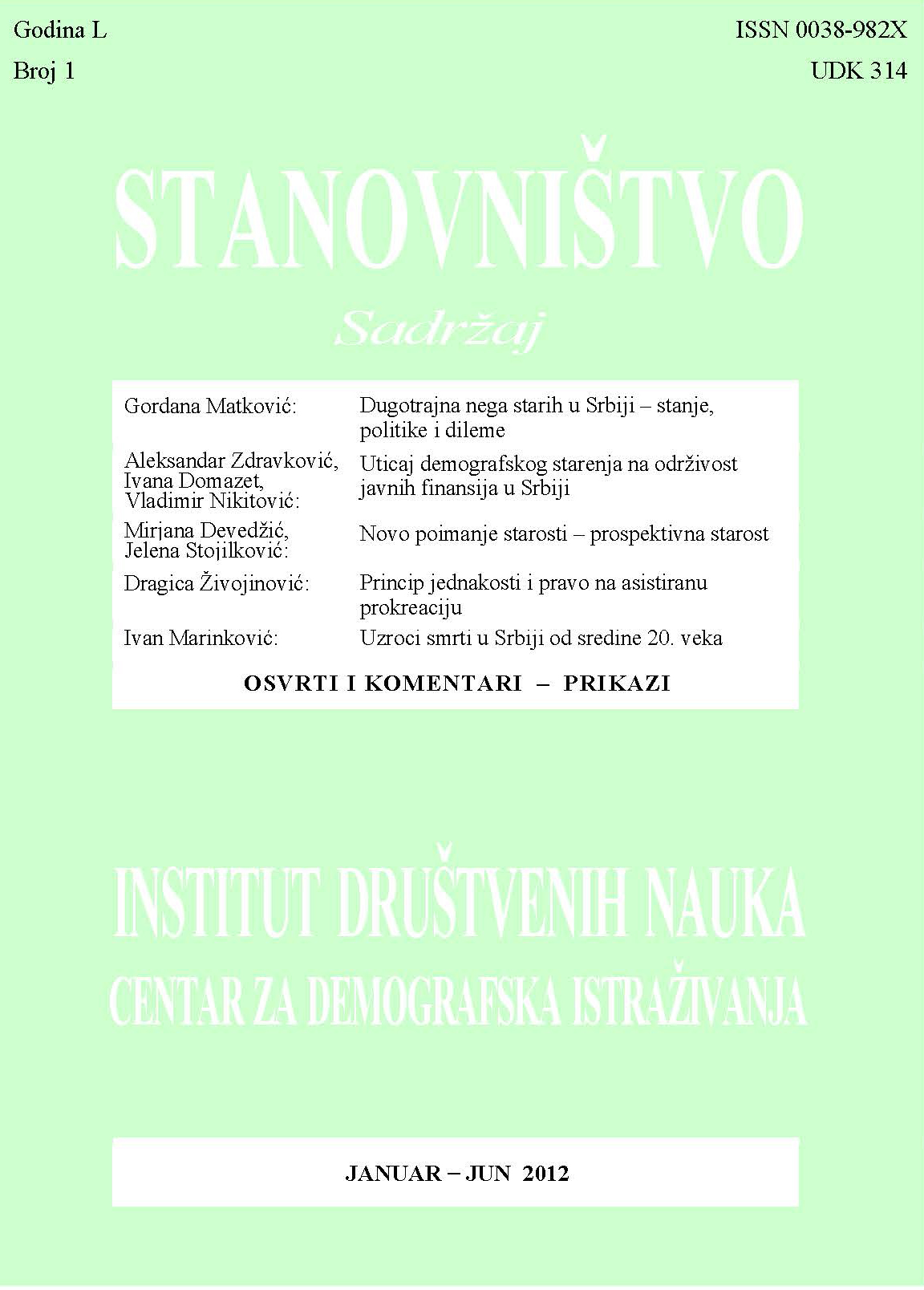Uticaj demografskog starenja na održivost javnih finansija u Srbiji
Impact of Demographic Ageing on Sustainability of Public Finance in Serbia
Author(s): Aleksandar Zdravković, Ivana Domazet, Vladimir NikitovićSubject(s): Sociology, Demography and human biology, Economic development, Public Finances
Published by: Институт друштвених наука
Keywords: demographic ageing; population projection; public finance; pension expenditure; Serbia
Summary/Abstract: Population ageing is a global phenomenon without precedent in the history of humanity having implications in all facets of life. From an economic point of view, population ageing is certainly one of the biggest challenges of modern time. A consequence of these global demographic tendencies reflected in growing number of pensioners which negatively affects sustainability of public pension systems financed by the principle of intergenerational solidarity (Pay-As-You-Go) - widely represented in public pension schemes of European countries. In this paper, impact of demographic ageing on pension systems is analyzed in the context of sustainability of public finance in Serbia in the period 2010-2050. Although the comparative analysis of the pension expenditure share in gross domestic product (GDP) does not point to significant differences between Serbia and the countries in the neighborhood and the European Union, the growth trend of subsidizing the Pension Fund from the government budget endangers medium-term sustainability of the public pension system in Serbia, bearing in mind that the implementation of measures proposed in pension reforms can be valorized only in the long run.The main objective of the analysis is projecting long-term pension expenditure as a share of GDP. The projections were formed indirectly by modeling the average pension expenditure, because this variable incorporates both growth in the total pension expenditure and growth in the number of pensioners as a result of demographic trends, and better reflects the actual growth of pension expenditure. For the purposes of the analysis, in addition to the projection of real GDP growth, size of the inactive population aged 65 and over, as the main contingent of the pension system users and the total number of pensioners, was projected by means of stochastic cohort component methodology. Based on these projections and assumptions about the growth rate of average pension expenditure (three scenarios), the projections of total pension expenditure (as a percentage of GDP) are produced for the period 2010-2050.The results indicate that the growth rate of pension expenditure over the past few years is unsustainable in the long run. However, there is fiscal space for continuous real growth of pensions that does not jeopardize the budget deficit on the medium term, and leads to long-term reduction of the share of pension expenditures in GDP. The proposed change would not affect sustainability of the pension system and consequently public finance in Serbia, even in completely certain circumstances of significant increase in the number of elderly and their pressure on the workforce. In this context, critical review of the current government approach to the pension growth dynamics was given from the perspective of medium-term sustainability of pension system, which resulted in appropriate recommendations.Generally, the intent of the Government of the Republic of Serbia on the indexation of pensions represent a good solution long term, but the premise of increasing pensions for a part of real GDP growth, if it is higher than 4%, is subject to criticism from the point of view of medium-term sustainability. The crisis cycle of the Serbian economy, similarly to that on a global level, has its maximum and minimum phase. After a maximum of the crisis is reached, there should be a few years of economic stagnation followed by gradual, and then by faster economic growth. Due to the projection of a relatively higher rate of economic growth and GDP in a future economic recovery, there is an increased risk that such a growth could be followed by sudden jumps in the growth of pensions, which could result in unsustainable funding of pension system. Therefore, the Government should impose some limitations in terms of the maximum increase in pension per annum in case of intensive and high economic growth.
Journal: Stanovništvo
- Issue Year: 50/2012
- Issue No: 1
- Page Range: 19-44
- Page Count: 26
- Language: Serbian

